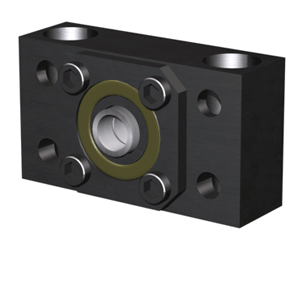
When dealing with miniature ball rail systems, having an effective lubrication system is essential for keeping the systems clean and running smooth. Miniature profile ball rail lubrication reduces friction and wear, prevents corrosion, dissipates heat and increases overall service life.
There are plenty of benefits to using industry-leading lubrication systems for miniature ball rails. Low-friction end seals effectively restrict dust while stainless steel endcaps act as scrapers, allowing for easy maintenance. Ball recirculation design, with hole and channel constructs fully sealed by a plastic frame and endcaps, reduces contact surface between steel ball and metal. This minimizes noise and adds to lubrication efficiency, reducing preventative maintenance.
A thin layer of oil separates the rolling elements from the raceway at the contact zone of the stainless steel ball rail. Lubrication systems allow the ball rails to move smoothly during short stroke movement. This lubrication assists in ensuring high-speed running production.
We recommend using LBL1, a lubricant formulated for rolling friction, with linear bearings. This lubrication is made to protect highly polished bearings from surface wear and corrosion.
Certain factors affect the reapplication levels, including speed, load, stroke length and operating environment. Practical observation is the only sure way to find a safe lubrication interval.
We recommend synthetic-oil based lithium with a viscosity between ISO VG32-100 soap grease if lubricant grease is required.

 Some customers have made their own ball screw supports, usually paired on either side of the ball nut in pairs of 2, 4 or 6, to reduce the unsupported distance, essentially quadrupling the critical speed for each pair used. Depending on the application, they can even allow you to select a smaller diameter ball screw, without compromising performance.
Some customers have made their own ball screw supports, usually paired on either side of the ball nut in pairs of 2, 4 or 6, to reduce the unsupported distance, essentially quadrupling the critical speed for each pair used. Depending on the application, they can even allow you to select a smaller diameter ball screw, without compromising performance.